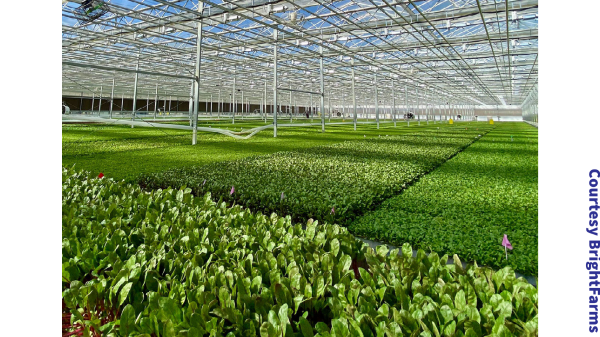On November 8, the International Fresh Produce Association (IFPA) BB #:378962 devoted its weekly Virtual Town Hall to food safety in controlled-environment agriculture (CEA).
Speakers included Monica Noble, director of food safety for 80 Acres Farms BB #:358643; Jennifer McEntire, founder of Food Safety Strategies; and Tom Stenzel, former co-CEO of IFPA and currently head of the Controlled Environment Agriculture Alliance (CEA Alliance).
The major theme of the webinar was to introduce Commodity Specific Food Safety Guidelines for Controlled Environment Agriculture. This, the first edition, is devoted to leafy greens and herbs and was released in October 2023.
Stenzel said that the initial goal of the initiative was to develop best-practices guidelines instead of a mere audit or checklist approach. Although the first edition focuses on leafy greens, he added, “I do believe many of the principles will apply to those who are growing tomatoes indoors,” another major commodity using CEA.
Nevertheless, McEntire emphasized, “Each commodity is different. Each commodity has their nuances, their peculiarities both with within the industry and in terms of their growing their processing, their handling, but also in terms of the just the composition of the people working within the groups and what they hope to accomplish in putting a document together.”
In order to keep the project manageable, she added, it was decided to limit the focus to these particular commodities as grown in CEA conditions in the United States.
Even so, McEntire continued, the responses from CEA producers varied greatly. In regard to water, for example, “everything, every person was different. Every operation was different: talk about sanitation, talk about inputs and your testing of inputs, your testing of the environment.”
McEntire also stressed that the document, being industry developed, is not a set of regulations. “We didn’t want to lock companies into numbers that were unrealistic or unsubstantiated, so the approach that we took was really around systems thinking—the thought process of how could a company defend the decisions they were making in setting the limits they set and taking the approaches that they would.”
In the end, the concept was based on “what the production system actually looks like. So not a one size fits all here,” McEntire added.
Areas covered in the guidelines include water, sanitation at various stages of the operation, verification, environmental monitoring programs, and waste management.
The document “does provide a roadmap for development for implementation of a food safety program uniform in its outcome, but not necessarily uniform in the way that one gets there,” added McEntire.
Even so, Noble pointed out, “we also wanted to provide a tool for auditors.”
The guide itself says, “This document is intended to aid the CEA production community as food safety staff and other management roles consider how to manage food safety risks associated with CEA production, given the rapid growth in this sector. Because CEA includes novel production practices, the document is also intended to help educate regulators, auditors, and members of the buying community who are involved in understanding or verifying food safety practices. It also serves as an opportunity to identify practices and conditions which CEA producers and handlers may not have previously considered as potential food safety risks.”
The guidelines end with areas where further research is needed, including food safety risks with various hydroponic systems, water recirculation, and the possibility of pathogen contamination in CEA farms with warm temperatures, high humidity, and LED lights used for plant growth.
Information on related topics can be found on the IFPA website under “Food Safety Resources.”



